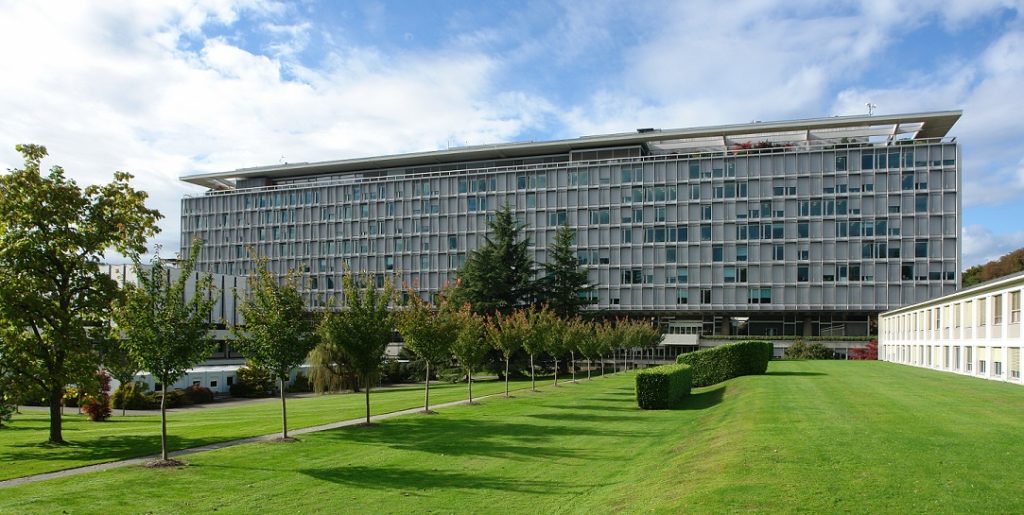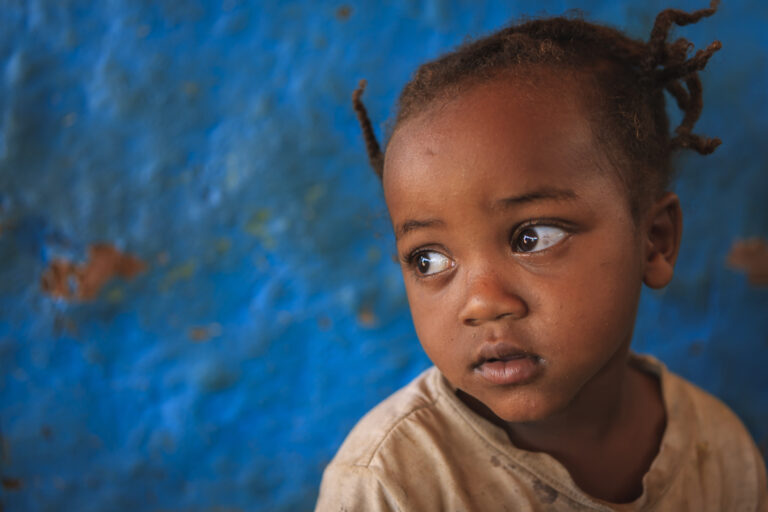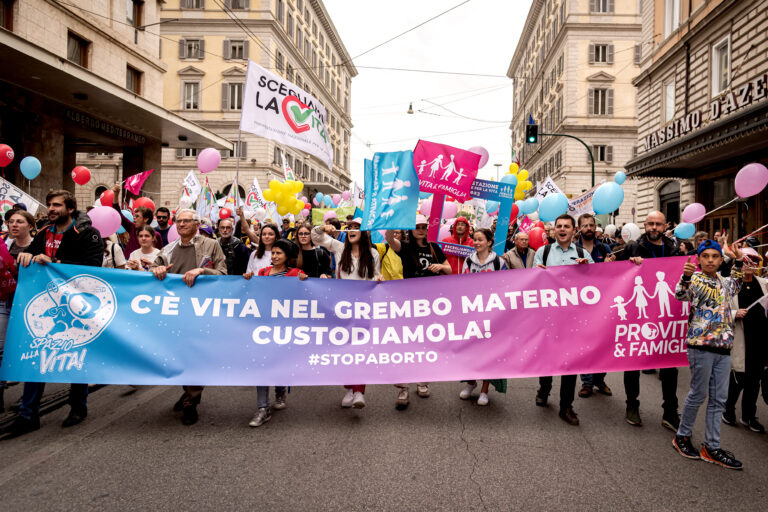The World Health Organization (WHO) has long promoted abortion under the premise of health. The WHO has long claimed that legalized abortion is crucial to reducing the prevalence of “unsafe abortion.”
For years, the WHO has published clinical handbooks and guidelines instructing health care workers how to perform abortions up to 12 weeks and beyond.[1] For over a decade and half, the WHO has issued policy guidances providing policy makers with recommendations for how to incorporate abortion into health policies and regulations.[2]
But in recent years, abortion advocacy[3] from the WHO has gradually increased as the organization has become more vocal in promoting access to so-called “safe abortion.” And the WHO’s 71st World Health Assembly meeting next week in Geneva will broach topics that could signal that the U.N. specialized agency may even take a significantly stronger position in favor of abortion in the near future.
Among the provisional agenda items to be discussed at this year’s World Health Assembly include the WHO’s activities over the past year in the area of sexual and reproductive health, including “safe abortion.”[4] The World Health Assembly (WHA) is an annual meeting which sets policy and directives for the WHO and approves the organization’s annual program budget.
Achievements in the area of sexual and reproductive health to be presented to the WHA include the WHO’s and HRP’s 2017 launch of the Global Abortion Policies Database, a data tool which aims to track the legal status of abortion in every U.N.-recognized state worldwide. The Database further lists all U.N. human rights treaties each country has acceded to and includes links to the concluding observations of treaty monitoring bodies whenever they have issued non-binding recommendations to state parties to loosen restrictions on abortion.
According to the Global Abortion Policies Database website, the purpose of the Database is to:
facilitate analyses of countries’ abortion laws and policies when they are placed in the context of WHO guidelines and human rights norms and standards. It is intended to help states identify and eliminate the barriers that women encounter in accessing safe abortion services.
Human rights treaty monitoring bodies and certain Special Procedures of the Human Rights Council have in recent years increasingly attempted to read abortion into international human rights treaties. Increasingly, pro-abortion advocates and many U.N. entities are coming to view the non-binding recommendations treaty monitoring bodies issue with respect to abortion as international human rights standards. As such, the Database will inevitably facilitate the work of U.N. entities and pro-abortion activists in placing pressure on sovereign member states to legalize or loosen restrictions on abortion. The WHO considers “barriers” to abortion access to include even minimal abortion restrictions such as waiting periods, parental consent laws, conscientious objection rights, and penalties for abortionists that break the law.
Also on the agenda at this year’s WHA is highlighting the progress the WHO has made in integrating abortion and human rights. The Framework for Cooperation, an agreement negotiated last year between the WHO and the United Nations Office of the United Nations High Commissioner for Human Rights (OHCHR), aims to deepen cross-agency collaboration in order to advance health rights, including sexual and reproductive health rights. The Framework for Cooperation is based on the recommendations of the High-Level Working Group on the Health and Human Rights of Women, Children and Adolescents.
The High-Level Working Group was jointly created by the WHO and the OHCHR in 2016 to integrate the health objectives in the Sustainable Development Goals (SDGs) and the U.N. Secretary General’s Global Strategy for Women’s, Children’s and Adolescents’ Health with international human rights laws and standards. It was expected that this would help garner support for the objectives among policy makers. The report of the High-Level Working Group (launched during last year’s WHA) interprets the Global Strategy to include a number of human rights-related actions including the decriminalization of abortion, sodomy, and prostitution:
Repeal, rescind or amend laws and policies that create barriers or restrict access to health services (including sexual and reproductive health and rights services) and that discriminate, explicitly or in effect, against women, children or adolescents as such, or on grounds prohibited under human rights law. This includes repealing laws that criminalize specific sexual and reproductive conduct and decisions, such as abortion, same-sex intimacy, sex work and the delivery or receipt of sexual and reproductive health and rights information.
The report of the High-Level Working Group was accepted by then-WHO Director-General Margaret Chan. It appears to be the first instance where a WHO authorized report has openly called for the legalization of abortion without prefacing it with qualifications or limitations and based primarily on conceptualizations of human rights rather than health or on the basis of being necessary to reduce the prevalence of “unsafe abortion.”
But perhaps the most troubling development at this year’s WHA is the content to be discussed at one of the official partner side events. On Monday, the Lancet-Guttmacher SRHR Commission will launch its report Accelerate Progress—Sexual and Reproductive Health Rights for All, a report published in The Lancet and first launched in Johannesburg, South Africa earlier this month.
Lancet-Guttmacher SRHR Commission report is an ambitious proposal to set a definition for sexual and reproductive health and rights (SRHR) that includes “neglected issues” such as “adolescent sexuality, gender-based violence, abortion, and diversity in sexual orientations and gender identities.”[5] The Commission’s report is an attempt to redefine sexual and reproductive health (SRH) in terms that go far beyond international consensus agreements which have dictated SRH policy for over two decades such as the Programme of Action from the 1994 International Conference on Population and Development (ICPD) in Cairo, the 1995 Beijing Platform for Action, and the 2030 Agenda for Sustainable Development. Needless to say, the Commission’s recommended definition for SRHR is much broader than most U.N. member states are willing to recognize.
The Commission calls upon the global community to embrace a “comprehensive agenda for SRHR” that includes elective abortion and comprehensive sex education as part of an essential package of reproductive health services.[6] The Commission makes a bold recommendation contrary to the international consensus agreed to at the ICPD that sovereign member states must eventually legalize and loosen restrictions on abortion, stating “In the long term, legal and policy reforms must be enacted that broaden the criteria under which an abortion is allowed.”[7] The Commission argues that liberalizing abortion laws are high-priority reform actions needed to support SRHR.
The Commission further ventures into gender ideology and surrogacy, proposing them as components of SRHR, and calling for legal changes to made in these areas where necessary. The Commission opines that high-priority reforms needed to promote SRHR include “prohibiting discrimination against people with diverse sexual orientations and gender identities and expression” which includes “whom to marry” and “supporting the rights of infertile and same-sex couples to start families, which might require reforms in laws and regulations related to infertility treatment, adoption, and surrogacy.”[8]
The Commission makes clear that it views religious liberty and conscience protection rights as secondary to SRHR, arguing that “[religious] values should not be used to justify denying people their rights.”[9]
The release of the Commission’s report ahead of this year’s WHA is an attempt by the Commission to pitch its recommended definition of SRHR to the WHA in the hopes that it will adopt its recommendations in whole or in part.
While there is no indication or guarantee that the WHA will adopt any of the SRHR Commission’s recommendations, the report’s recommendations on abortion represent a logical extension of WHO guidelines and recommendations on the issue, particularly in light of recent efforts by the WHO to tie abortion access to human rights. And while side events do not always translate into policy, policy changes often find their impetus there. For instance, the report of the High-Level Working Group on the Health and Human Rights of Women, Children and Adolescents was launched at a side event last year and that report’s recommendations have provided the basis for an official framework adopted by the WHO that same year.
To date, the WHO has never adopted an official position that member states should legalize abortion. In years past, the WHO has been careful in attempting to restrict its promotion of abortion to the recommended limits set by international consensus agreements including the ICPD Programme of Action and the Beijing Platform for Action. The ICPD Programme of Action clearly states
In no case should abortion be promoted as a method of family planning
and
Any measures or changes related to abortion within the health system can only be determined at the national or local level according to the national legislation[10].
Because the ICPD Programme of Action discourages the promotion of abortion as a method of family planning, the WHO instead promotes abortion as a health issue. And because the Programme of Action stipulates that policy changes on abortion are issues for sovereign states alone to decide, the WHO in the past has been careful not to call upon states to legalize abortion outright. Instead, the WHO will strongly encourage states to legalize abortion by arguing that legalized abortion decreases the incidence of “unsafe abortion” and that states have an obligation to protect women’s health. By adopting the appearance of an evidence-based approach, the WHO leaves member states with the clear implication that legalized abortion is necessary to protect women’s health.
At the same time, however, the WHO never mentions the wealth of published research showing that abortion is harmful to women’s physical, psychological, and emotional health.[11],[12],[13],[14],[15],[16],[17],[18],[19],[20],[21],[22],[23],[24],[25],[26],[27],[28] The WHO further peddles the association between wealthy western countries with liberal abortion laws and low maternal morbidity due to abortion as if the two were causally related by necessity. The WHO ignores the examples of pro-life countries with exceptionally low maternal mortality ratios (MMR) like Chile,[29] Ireland, Poland, and Malta which prove that there is no necessary association between legal abortion and low MMR.
Moreover, the WHO ignores the biological fact that the unborn child is a human being distinct from its mother.[30] The WHO Constitution states that the highest attainable standard of health is a fundamental right for every human being without distinction:
The enjoyment of the highest attainable standard of health is one of the fundamental rights of every human being without distinction of race, religion, political belief, economic or social condition.[31]
The WHO’s policy guidance on abortion recommends that governments remove even minimal restrictions on abortion including waiting periods, parental consent, restrictions on coverage of abortion in health insurance plans, and conscientious objection rights.[32] The WHO even urges states loosely interpret the laws they maintain on abortion. It is not clear whether there are any restrictions on abortion aside from coerced abortion or sex-selective abortion that the WHO would not recommend against or would not bring evidence against on the basis of health.
While the WHO does not technically engage in abortion advocacy, their activities on the issue of abortion very nearly constitute advocacy as they very clearly favor one side of the issue over the other, ignoring evidence-based research to the contrary. Whatever you may choose to call it (I choose to call it “advocacy” because that it what it, in practice, most closely approximates), the WHO is not engaged in unbiased, evidence-based research when it comes to the issue of abortion policy. The WHO drafts policy guidances that very strongly recommend a particular course of action and such recommendations are offered with the intent that policy makers will adopt them. The WHO further uses human rights law to derive its recommendations on abortion policy. The WHO as multilateral entity with a mandate on matters related to health is not competent to speak on the issue of international human rights law nor is it competent to draw policy conclusions from them.
In recent years, abortion advocacy from the WHO has increased as the organization has become more vocal in promoting the legalization of abortion. The second edition of the WHO’s policy guidance, published in 2012, uses stronger language in urging policy makers to loosen restrictions on abortion than its first edition released in 2003, even going so far as to reiterate the recommendations of treaty monitoring bodies to legalize abortion “at a minimum” in the cases of life, health, rape, and incest.[33]
Recent efforts by the WHO to integrate abortion as a health issue with international human rights law are particularly concerning. Because states are bound by international law to observe treaties they have ratified, and because the judgements of treaty monitoring bodies are often esteemed (even if they in and of themselves create no legal obligations on states), recommendations issued by treaty monitoring bodies or Special Procedures of the Human Rights Council can exert significant pressure on sovereign member states to loosen abortion restrictions. There are a growing number of examples where the recommendations of treaty monitoring bodies have led sovereign states to change their abortion laws including Nepal, Colombia, Luxembourg, Argentina, Bolivia, and others.[34]
Pro-life stakeholders should be attentive and concerned about the WHO’s efforts to more closely integrate abortion and human rights law. Tangible steps need to be taken to reign in the WHO’s abortion advocacy in order to prevent potentially further losses for the right to life on the international stage.
On January 23, 2017, President Trump reinstated the Mexico City Policy (now called the Protecting Life in Global Health Assistance Policy or PLGHA). PLGHA prohibits U.S. global health assistance from funding organizations that perform or promote abortion as a method of family planning. However, what many pro-life stakeholders do not realize is that the Policy only applies in its entirety to foreign non-governmental organizations. The Policy does not apply to Public International Organizations (PIOs) or multilateral organizations that are the association of governments. The WHO is designated by the U.S. Government as a Public International Organization and thus the Mexico City Policy does not apply to the WHO. Moreover, even if PLGHA did apply to PIOs, it does not appear that the WHO would meet the Policy’s threshold for what constitutes promoting abortion as a method of family planning, although it comes close.
[1] The WHO’s guidance is complete with detailed summaries of scholarly literature on abortion methods and practice and includes comprehensive Grading of Recommendations Assessment, Development and Evaluation (GRADE) Evidence to Decision (EtD) frameworks and GRADE tables to aid abortionists on recommended methods for a wide variety of abortion procedure tasks.
[2] This guidance also includes comprehensive evidence summary tables and GRADE tables for a variety of abortion procedure tasks. The WHO has translated its abortion policy guidance into Spanish, French, Japanese, Portuguese, Romanian, Russian, Serbian, Ukrainian, Azerbaijani, and Bosnian.
[3] This term is explained later in the article.
[4] Seventy-First World Health Assembly, provisional agenda item 12.3, Global Strategy for Women’s, Children’s and Adolescents’ Health (2016–2030): sexual and reproductive health, interpersonal violence, and early childhood development, Document A71/1 Rev.1 (May 10, 2018).
[5] Starrs AM, Ezeh AC, Barker G, Basu A, Bertrand JT, Blum R, et al. Accelerate progress—sexual and reproductive health and rights for all: report of the Guttmacher–Lancet Commission. The Lancet. 2018 May 9. http://dx.doi.org/10.1016/S0140-6736(18)30293-9.
[6] Ibid.
[7] Id.
[8] Id.
[9] Id.
[10] International Conference on Population and Development, Cairo, Egypt, Sep. 5-13, 1994, Programme of Action of the International Conference on Population and Development, ¶8.25, Report of the International Conference on Population and Development, U.N. Doc. A/CONF.171113/Rev.1, U.N. Sales No. 95.XIII.18 (1995).
[11] Le DC, Kubo T, Fujino Y, Sokal DC, Vach TH, Pham TM, Matsuda S. Reproductive factors in relation to ovarian cancer: a case–control study in Northern Vietnam. Contraception 2012 Nov 30;86(5):494-9.
[12] Scholten BL, Page-Christiaens GC, Franx A, Hukkelhoven CW, Koster MP. The influence of pregnancy termination on the outcome of subsequent pregnancies: a retrospective cohort study. BMJ Open 2013 Jan 1;3(5):e002803.
[13] Coleman PK, Coyle CT, Shuping M, Rue VM. Induced abortion and anxiety, mood, and substance abuse disorders: Isolating the effects of abortion in the national comorbidity survey. Journal of Psychiatric Research 2009 May 31;43(8):770-6.
[14] Cougle JR, Reardon DC, Coleman PK. Depression associated with abortion and childbirth: a long-term analysis of the NLSY cohort. Med Sci Monit 2003 Apr;9(4):CR105-12.
[15] Cougle JR, Reardon DC, Coleman PK. Generalized anxiety following unintended pregnancies resolved through childbirth and abortion: a cohort study of the 1995 National Survey of Family Growth. J Anxiety Disord 2005;19(1):137-42.
[16] Broen AN, Moum T, Bödtker AS, Ekeberg O. Psychological impact on women of miscarriage versus induced abortion: a 2-year follow-up study. Psychosom Med 2004 Mar-Apr;66(2):265-71.
[17] Fergusson DM, Horwood LJ, Boden JM. Reactions to abortion and subsequent mental health. Br J Psychiatry 2009 Nov;195(5):420-6. doi: 10.1192/bjp.bp.109.066068.
[18] Fergusson DM, Horwood LJ, Ridder EM. Abortion in young women and subsequent mental health. J Child Psychol Psychiatry 2006 Jan;47(1):16-24.
[19] Mota NP, Burnett M, Sareen J. Associations between abortion, mental disorders, and suicidal behaviour in a nationally representative sample. Can J Psychiatry 2010 Apr;55(4):239-47.
[20] Reardon DC, Cougle JR, Rue VM, Shuping MW, Coleman PK, Ney PG. Psychiatric admissions of low-income women following abortion and childbirth. CMAJ 2003 May 13;168(10):1253-6.
[21] Brind J, Chinchilli VM, Severs WB, Summy-Long J. Induced abortion as an independent risk factor for breast cancer: a comprehensive review and meta-analysis. Journal of Epidemiology & Community Health 1996 Oct 1;50(5):481-96.
[22] Coleman PK, Reardon DC, Rue VM, Cougle J. State-funded abortions versus deliveries: a comparison of outpatient mental health claims over 4 years. Am J Orthopsychiatry 2002 Jan;72(1):141-52.
[23] Selena Ewing, Women and Abortion: An Evidence Based Review, Women’s Forum Australia (2005).
[24] Huang Y, Zhang X, Li W, Song F, Dai H, Wang J, Gao Y, Liu X, Chen C, Yan Y, Wang Y. A meta-analysis of the association between induced abortion and breast cancer risk among Chinese females. Cancer Causes & Control 2014 Feb;25(2):227.
[25] Bhadoria A S, Kapil U, Sareen N, Singh P. Reproductive factors and breast cancer: A case-control study in tertiary care hospital of North India. Indian J Cancer 2013;50:316-21.
[26] Jiang AR, Gao CM, Ding JH, Li SP, Liu YT, Cao HX, Wu JZ, Tang JH, Qian Y, Tajima K. Abortions and breast cancer risk in premenopausal and postmenopausal women in Jiangsu Province of China. Asian Pacific Journal of Cancer Prevention 2012;13(1):33-5.
[27] Coleman PK, Reardon DC, Cougle JR. Substance use among pregnant women in the context of previous reproductive loss and desire for current pregnancy. British Journal of Health Psychology 2005 May 1;10(2):255-68.
[28] Coleman PK. Abortion and mental health: quantitative synthesis and analysis of research published 1995-2009. The British Journal of Psychiatry 2011; 199: 180-186.
[29] Koch E, Thorp J, Bravo M, Gatica S, Romero CX, Aguilera H, et al. Women’s education level, maternal health facilities, abortion legislation and maternal deaths: a natural experiment in Chile from 1957 to 2007. PLoS One. 2012 May 4;7(5):e36613.
[30] “we begin our description of the developing human with the formation and differentiation of the male and female sex cells or gametes, which will unite at fertilisation to initiate the embryonic development of a new individual”: William J. Larsen, Human Embryology, 1 (3rd ed. 2002).
[31] Constitution of the World Health Organization, Jul. 22, 1946 (as amended as of Sep. 15, 2005).
[32] World Health Organization, Safe Abortion: Technical and Policy Guidance for Health Systems 94-98 (2nd ed. 2012).
[33] Ibid.
[34] Zorzi K. The impact of the United Nations on national abortion laws. Catholic University Law Review. 2016;65(2):409.











